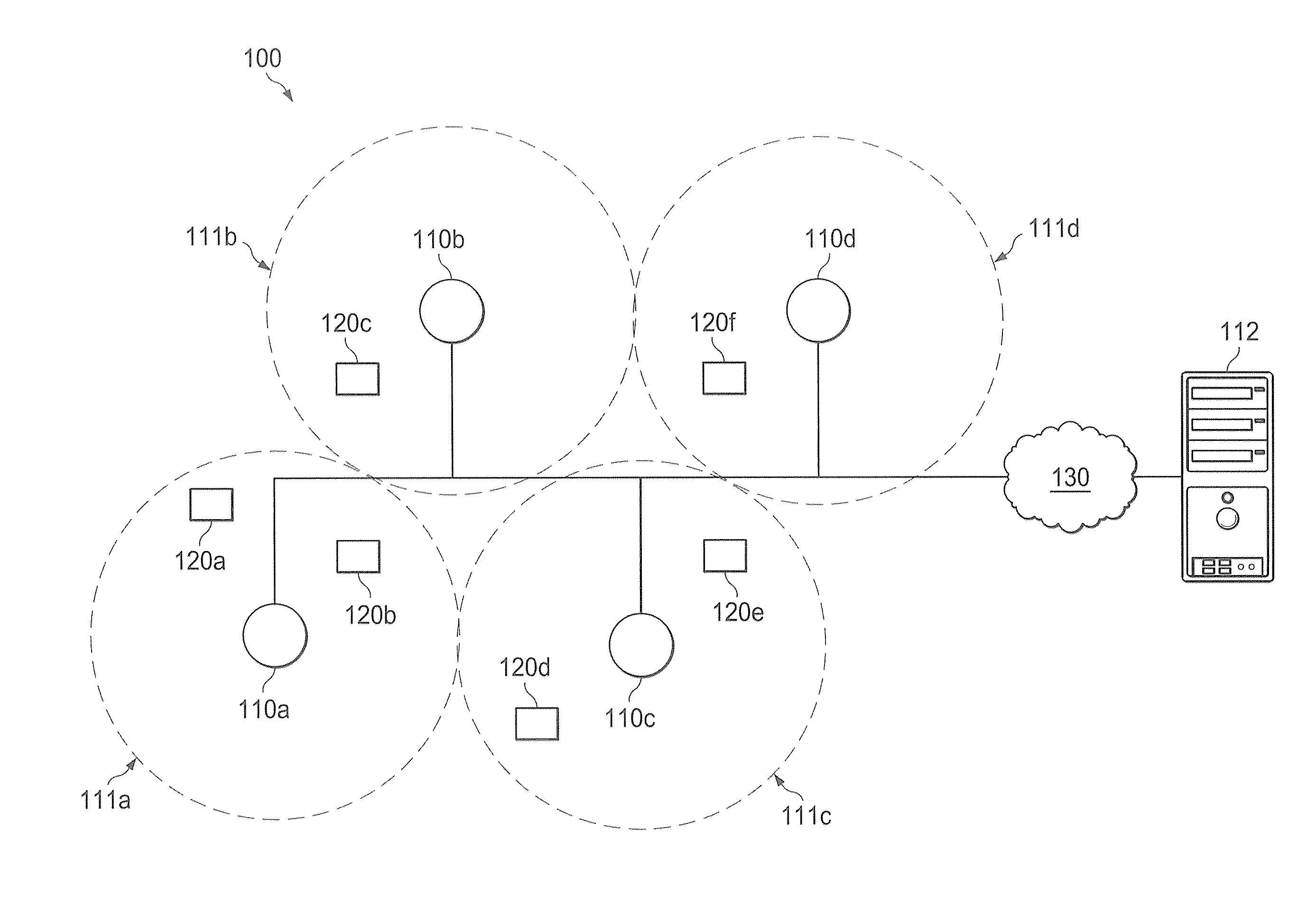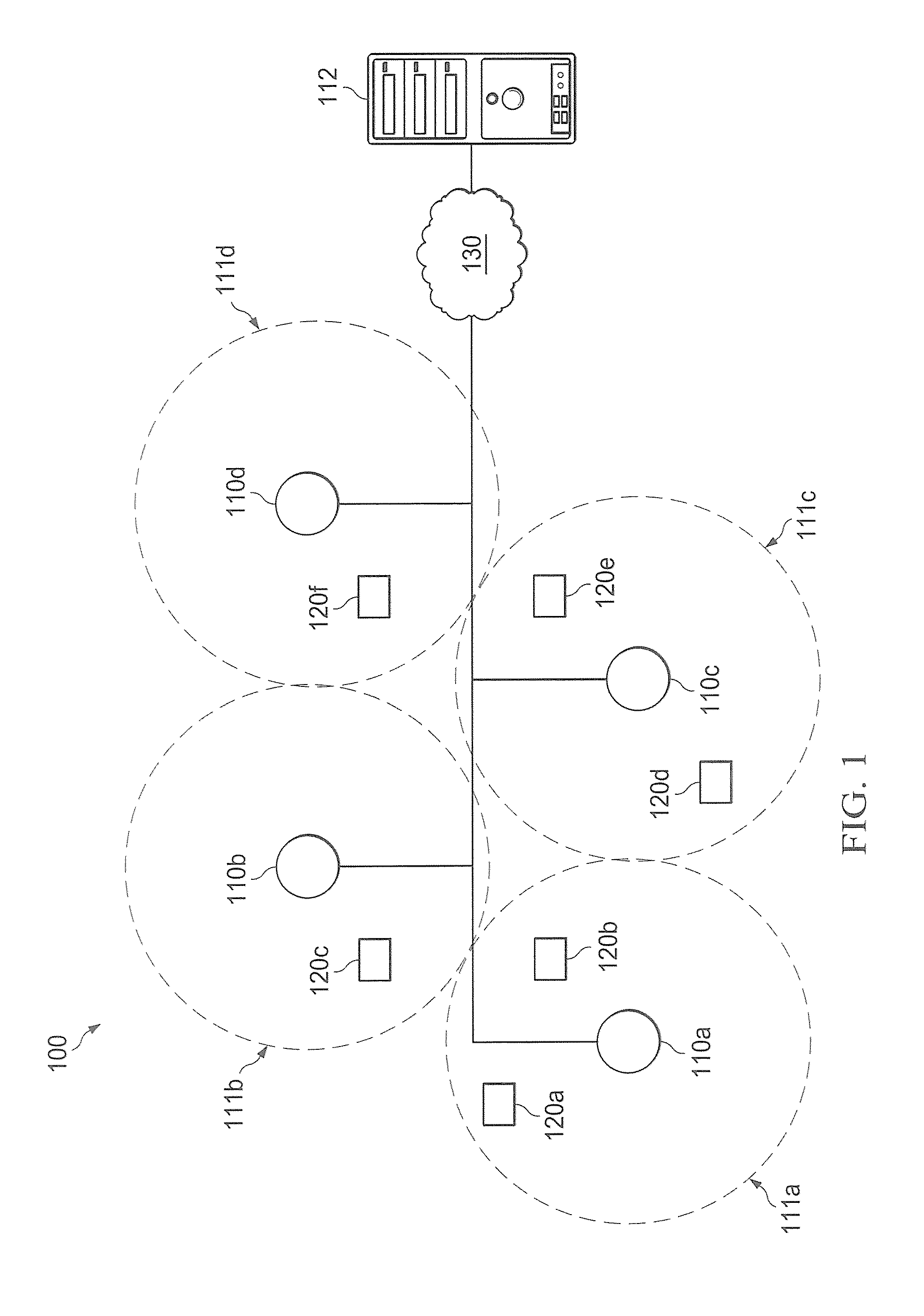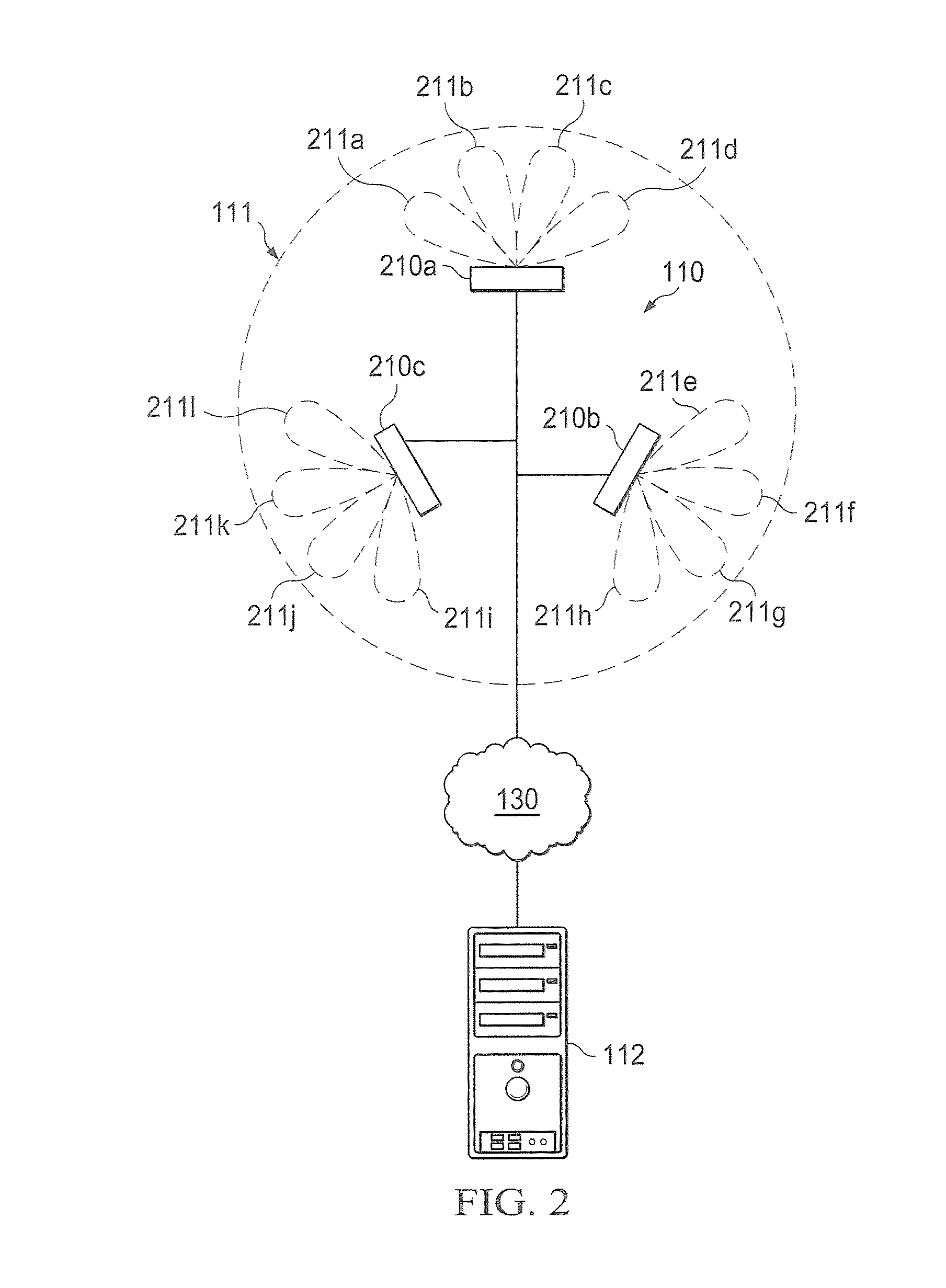Systems and methods for mitigating interference between access points
a technology of access points and interference, applied in the field of communication, can solve the problems of difficult and expensive deployment of access points, relatively few physical locations may actually be available, and many landowners do not have leases or easements, etc., to facilitate the use of tdd techniques, and reduce the number of base site locations
- Summary
- Abstract
- Description
- Claims
- Application Information
AI Technical Summary
Benefits of technology
Problems solved by technology
Method used
Image
Examples
Embodiment Construction
[0025]FIG. 1 shows a wireless communication system adapted according to embodiments of the present invention. Specifically, wireless communication system 100 is shown comprising base sites 110a-110d, each having a service area associated therewith (shown as service areas 111a-111d, respectively), and terminals 120a-120f. Each of base sites 110a-110d and terminals 120a-120f are wireless nodes of wireless communication system 100, wherein such wireless nodes may communicate wirelessly with one another. For example, bidirectional links may be provided between a base site of base sites 110a-110d and an associated terminal of terminals 120a-120f to provide broadband communication therebetween. Base sites 110a-110d may, for example, be coupled to various other systems, networks, etc., such as through network 130, to facilitate communication between such systems and networks and terminals 120a-120f. Accordingly, wireless communication system 100 of the illustrated embodiment provides a cel...
PUM
 Login to View More
Login to View More Abstract
Description
Claims
Application Information
 Login to View More
Login to View More - R&D
- Intellectual Property
- Life Sciences
- Materials
- Tech Scout
- Unparalleled Data Quality
- Higher Quality Content
- 60% Fewer Hallucinations
Browse by: Latest US Patents, China's latest patents, Technical Efficacy Thesaurus, Application Domain, Technology Topic, Popular Technical Reports.
© 2025 PatSnap. All rights reserved.Legal|Privacy policy|Modern Slavery Act Transparency Statement|Sitemap|About US| Contact US: help@patsnap.com



